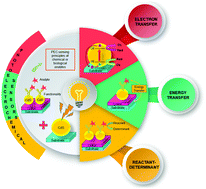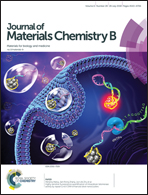A review on visible-light induced photoelectrochemical sensors based on CdS nanoparticles
Abstract
Discovering the distinctive photophysical properties of semiconductor nanoparticles (NPs) has made these a popular subject in recent advances in nanotechnology-related analytical methods. Semiconductor NPs are well-known materials that have been widely used in photovoltaic devices such as optical sensors and bioimaging, and dye-sensitized solar cells (DSSCs), as well as for light-emitting diodes (LEDs). The use of a narrow-bandgap semiconductor such as CdS NPs in the photoelectrochemical (PEC) detection of chemicals and biological molecules plays a key role as a photosensitizer and promotes some specific advantages in light-harvesting media. Their size-controlled optical and electrical properties make NPs fascinating and promising materials for a variety of nanoscale photovoltaic devices. Moreover, charge injection from the narrow bandgap to the adjacent material leads to efficient charge separation and prolongs the electron lifetime by the elimination of the charge carrier recombination probability. In this regard, a single photon enables the production of multiple photogenerated charge carriers in CdS NPs, which subsequently boosts the effectiveness of the photovoltaic devices. In particular, the present review article highlights the recent emerging PEC detection methods based on CdS NPs, specifically related to the direct and indirect interactions of NPs with target analytes. The current opportunities and challenges in achieving real-world applications of CdS-based PEC sensing are also presented.

- This article is part of the themed collection: Recent Review Articles


 Please wait while we load your content...
Please wait while we load your content...